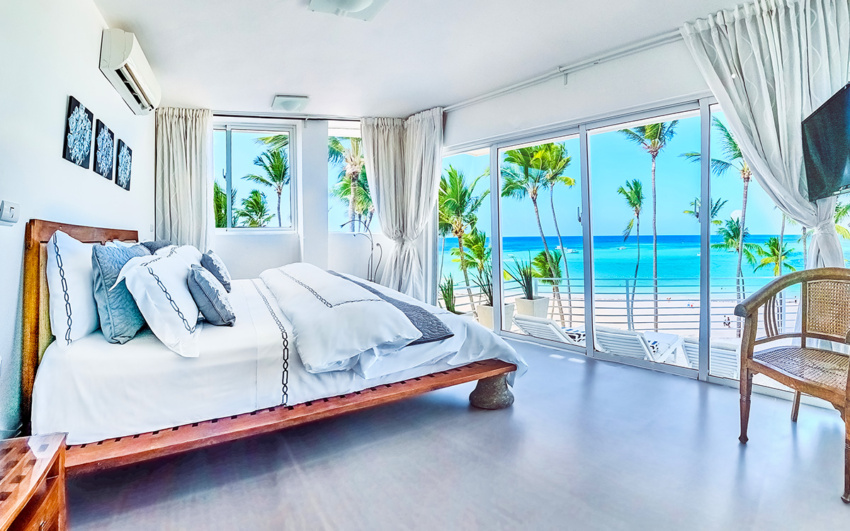Real Estate Videography - Capture Buyer's
Attention & Boost Your Sales
By choosing this service, you will get:
Real Estate Videography
- High-quality videography that showcases the property in its best light.
- Video that can be used for marketing purposes.
- Attention to details, ensuring all key features of the property are highlighted.
4K Video Footage
- 5 minutes of 4K video footage (from Canon EOS R8).
- We are flexible of capturing footage in challenging environments or conditions.
- With excellent resolution and quality, you will get stunning, professional-level video.
Free Drone Footage
- 2 minutes of 4K aerial video footage.
- A unique bird's-eye view of your property or any location of your choice.
- This service is offered free of charge as a value-added bonus to enhance your video content.
From $220 $199 /video.
Why Your Real Estate Needs a Video
Video Content Boosts Online Engagement and Conversions
- 50% of consumers use the Internet to research real estate properties, emphasizing the need for a strong online presence.
- Videos garner 21.2% more interactions than images on social media, setting the benchmark for contemporary real estate promotion.
- 84% of people looking for rentals deem online information crucial for their decision-making.
- Adding videos to emails doubles click rates and cuts opt-outs by 75%.
Video Tours Provide Clarity and Credibility
- Video tours clarify what clients can expect, reducing misunderstandings.
- A well-made video can highlight key features of a property in a way that photos and text descriptions can't, giving potential glients a comprehensive understanding before making decisions.
- High-quality video content enhances your credibility, ensuring prospective clients that you invest in delivering the best information possible.
Video Amplifies Your Listings and Improves Online Visibility
- Video content is more likely to be shared on social media platforms, extending your reach and potentially attracting a larger audience to your listings.
- Google and other search engines give preference to websites with diverse content, including videos. This can help lifting your property listings in search rankings.
- When you are off the clock, your video content continues to attract potential clients, giving you an edge in today's competitive market.
Contact Us For Details
What Types of Videos We Can Create
- Property listing video. A detailed video of a specific property, including an overview, guided tour, and essential details like address and agent contact. Enhanced with aerial footage, music, and AR/VR.
- Testimonial Video. Features genuine testimonials from past clients or local individuals, potentially enhanced with Q&A sessions and property clips.
- Surroundings & neighborhood videos. The surroundings of your property can be a good selling point. We assist in emphasizing nearby amenities and key landmarks close to your listing.
- Short format real estate videos. For maximum impact on social media, it's crucial to have brief and compelling videos. We fine-tune your content to ensure it promotes over all platforms.
- Agency Introduction Video. An overview of the real estate agency, its operations, and unique selling points, differentiating it from competitors.
- Guided Tour Video. A virtual property tour to attract potential clients and showcase promotional capabilities.
- Advice Video. Offers guidance on real estate transactions, addressing common questions and challenges. Enhanced with graphics and viewer queries.
- Educational Video. These videos address common questions in the real estate process, offering clear and engaging answers.
How Do We Work
Consultation & Goal Setting
Videography
Session
Additional
Services
Post
Processing
Review &
Feedback
Full Payment & Delivering
Frequently Asked Questions
Are real estate videos worth it?
Absolutely! real estate videos are worth it. They are a proven marketing strategy that boosts SEO and engagement and attracts more sellers.
73% of homeowners prefer realtors who use video, yet only about 10% of agents currently utilize this strategy.
Videos, from virtual tours to aerial drone footage, provide a detailed showcase of properties, offering a richer experience than photos alone. If a picture speaks a thousand words, a video speaks volumes more.
How long should a real estate video be?
A typical real estate video should be 2-4 minutes for property tours. However, agent introductions, testimonials, and advertisements should be shorter, ranging from 30 seconds to 2 minutes. Always prioritize engaging content and capture viewers’ attention early on.
Why use video in real estate?
In the digital age, video is the gold standard for real estate. Most homeowners lean towards realtors using video because it captures the essence of properties in ways photos can’t.
It’s not just about showcasing homes but building trust and engagement. With most internet traffic being video-driven, using it in real estate isn’t just an advantage; it’s essential.
What is the best time to shoot real estate videos?
The best time for real estate photography or videography is during solar noon when the sun is at its highest peak in the sky, which minimizes shadows.
However, the property’s orientation, whether it faces north, south, east, or west, can also influence the lighting. For drone shots, having the sun directly overhead is ideal.
Natural lighting is the best for inside property videography. Still, if the property has poor lighting, you can use external sources like flash, ensuring it looks natural and avoids creating unwanted shadows.
Twilight shots, taken around 20 minutes after sunset, can also provide a unique and appealing look.
What are the best frame rates for real estate video?
The natural, cinematic appearance standard is 24 frames per second (FPS). This frame rate mimics what we’re accustomed to seeing in movies.
30 FPS is the standard frame rate for social media and websites. This frame rate captures enough detail for viewers to process the image smoothly. If you want a slightly dreamy, slow-motion effect, 30 FPS is ideal, especially when slowed down to 24 FPS during editing. For a more pronounced slow-motion effect, 60 FPS is better, which can be slowed down even further in post-production.
However, be cautious with 60 FPS in low light conditions, as it can result in noisy images. When filming someone speaking or doing a guided tour, always use 24 FPS for real-time movements.
In low-light scenarios, 24 FPS is also beneficial because it allows for a slower shutter speed, which can help increase exposure and reduce noise.
How important is real estate videography?
Real estate videography is incredibly important. Video content offers numerous benefits. It enhances online listings, provides potential buyers a more immersive experience, and can significantly boost an agent’s marketing efforts.
Video content can convey the character and feel of a property in ways that photos alone cannot. Moreover, statistics indicate that homeowners are more likely to list with realtors who use video, and videos can lead to increased engagement and higher conversion rates.
In today’s digital age, with most property searches starting online, compelling video content can set a listing apart and attract more potential buyers. So, if you’re in the real estate business, investing in quality videography is a smart move.
How to shoot a property video?
When shooting a property video, the primary goal is to create a marketing tool to help sell or rent out the property. Using a good camera with a wide-angle lens is essential to capture as much of the room as possible.
A gimbal (stabilizing tool) ensures smooth footage, especially when moving through the property. Maintaining consistent lighting and color is crucial, so adjusting the camera’s settings, like white balance, is vital.
When filming, stick to straightforward movements, briefly capturing the main rooms from multiple angles and secondary rooms. Visualizing the final video and shooting in that order is also helpful, making the editing process smoother.
Lastly, always remember the video’s purpose: to showcase the property effectively to potential buyers or renters.
Does videography include editing?
No, videography does not inherently include editing. Videography focuses on capturing the footage, while editing involves refining and assembling that footage into a final product.
What are the benefits of drone videography?
Drone videography has revolutionized visual capture, especially in real estate and outdoor events. One of the main benefits is that it provides a unique aerial perspective, allowing viewers to see a property or location from angles that were previously hard to achieve.
This bird’s-eye view can showcase the expanse of a property, its surroundings, and even the neighborhood’s layout. It’s precious for properties with vast landscapes or unique architectural features.
Additionally, drone footage adds a cinematic quality to videos. It can make even simple videos feel more professional and engaging. For businesses, this can elevate their branding and marketing efforts. And let’s remember the cost aspect; drones have made aerial shots more affordable than traditional methods like hiring helicopters.
What is the best setup for real estate video?
- You’d want a camera with interchangeable lenses, good low-light capabilities, and the ability to shoot at least in 1080p.
- A wide-angle lens is essential for real estate videos to capture as much of a room or space in one.
- Gimbal to ensure smooth, cinematic shots, especially when moving through a property. It stabilizes the camera, eliminating shaky footage and giving a professional touch to the video.
Additional Equipment
- Prime lens – A tighter lens like a 50mm can help capture details of the home.
- A drone can provide beautiful aerial shots of properties with extensive land or unique exterior features, giving potential buyers a full view of the property.
- Polarizer. Helps reduce glare from surfaces like wood floors and enhances the overall image quality by deepening blue skies.
Settings
- If your camera supports it, shoot in a log profile for better dynamic range and post-production flexibility.
- Use a custom white balance to ensure consistent color throughout the video.
- Frame rates: Interiors can be shot at 30fps, while details and exteriors can be shot at 60fps for a cinematic slow-motion effect in post-production.
Does video really sell houses?
Yes, video is a powerful tool in the real estate industry. It serves as a marketing material that you can use to showcase and promote properties effectively. The main goal of real estate videography is to create compelling content that aids in selling the home.
By offering a dynamic and immersive view of a property, video can capture a home’s essence and unique features in a way that photos alone might not. So, video does play a significant role in selling houses.
Is social media important for real estate?
Absolutely. You miss a lot if you’re in real estate and not on platforms like Instagram, Facebook, or TikTok. Social media platforms allow you to show properties and connect with potential buyers easily.
It’s not just about selling; it’s also about building relationships and understanding what people are looking for. So, being active on social media is essential for anyone in real estate.
How long does it take to shoot real estate video?
The size of the property is the most critical factor here. A standard-sized home might take anywhere from 2 to 4 hours. However, large properties or homes with unique features that need to be highlighted could take a full day or multiple days.
Please contact our team of experts for a precise calculation of time and cost specific to your project.
Where should I put my real estate videography?
Once your real estate video is ready, you should put it on platforms like YouTube and Vimeo. They’re great for hosting videos and easy to share.
Remember to post it on your website, property listing, and social media. Share snippets or the full video on Facebook, Instagram, TikTok, and LinkedIn. It’s all about getting eyes on your property; these platforms can help spread the word!
How much does it cost to make a real estate video?
Our real estate videography price starts from $199 per 5 minutes. Pricing may vary depending on the total video shooting time. Please contact our team for a precise calculation of time and cost specific to your project.
What does a real estate videography include?
Videography for real estate includes shooting the interior and exterior of a home or property and providing a detailed view for online listings.
We offer 15 minutes of 4K video footage with a Canon EOS R8, known for its high resolution and versatility. As a bonus, 5 minutes of 4K aerial footage are shot using a DJI Mini 2 drone, adding a unique perspective to the content.
Book Your Video Session Now
Reach out to us to explore our services further and tailor an order that meets your specific needs.





